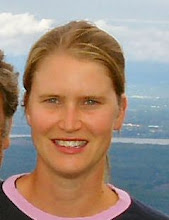The wet weather has caused the vegetable farmers in the Northeast to go on a late blight alert. Late blight is the disease that caused the potato famine in Ireland in the 1840s. We experienced it firsthand in 2000 on our tomatoes. After the spores arrived (with a thunderstorm), it blackened the plants in a matter of days, transforming them into slimy, moldy skeletons as the mold consumed all the tissue. It is a disease feared by both organic and conventional farmers, because there is no cure once it has been detected. The only thing a grower can do is preventative treatment. We have been advised to spray moderate amounts of copper, though it is generally considered too mild of a treatment when the infestation level is high.
In last week’s letter I stated that many crop failures are human failures. In the spirit of that I will quote a variation on this by John Mitchell, an Irish political writer of the 1840s: “The Almighty, indeed, sent the potato blight, but the English created the Famine.” His observations were considered treason by the English and he was exiled to Bermuda. Two and a half million people starved to death because the landlords regarded the land as a source of income from which to extract as much money as possible. During the late 1840s, peasants were evicted from their properties and landlords burned down their modest cabins (shacks, really), to use the land for grazing and grains. While millions of people starved to death, food continued to be exported to England.
There are some lessons to be learned from this experience. Not unlike the new wave of young farmers, born and bred in the city, who venture into agriculture these days, the average Irish farmer leased a farm of one to five acres in size. We are in the middle of an enormous land transfer from active multi-generational farmers to wealthy landowners. Organizations like the Columbia Land Conservancy and the Open Space Institute recognize the need to create a link between these new landowners and farmers, understanding that there will only be a fruitful relationship when the two parties get along and there is an ironclad agreement describing mutually agreed-upon terms. There is an influx of city folks in the Hudson Valley in love with land, both rich and poor, and not only around here. A while ago, a young farmer in California wrote on a blog:
“Then there is the issue of land access. There is no doubt that the owner of our ranch is doing the best that she can, with what she has. But why are we still in a situation where the rich get to decide the best uses for land, while hard working, intelligent, compassionate, humble workers just do what we’re told? Most opportunities that I hear about for young farmers in this area involve farming for someone with land, and that someone is no doubt rich, and almost as likely, they KNOW NOTHING ABOUT FARMING. We get told to mow the lawn with a fossil-fueled machine, instead of having it grazed by sheep. We are told that floating row cover looks tacky, ‘can we not use it?’ ‘Well, maybe not, if you don’t mind grubs in your radishes’.
My point is this: the sustainable food system will never truly exist under the currently existing conditions around land ownership. It’s not just enough to create local markets for organic food. If we truly need 20,000,000 new small-scale farmers to make this thing work, then those millions of farmers need secure access to land. No matter how many well-intentioned ‘progressive’ rich people there are in the Bay Area who want to see a farm on their land, tenant farming, sharecropping, or—as they used to call it—‘serfdom’ isn’t going to cut it.” (By Antonio Roman-Alcalá of San Francisco)
While the land-loving city folks have little in common with the greedy English Counts of the 1840s, we need to encourage thinking outside the box. Antonio’s writing underscores the need for new ideas regarding land ownership. While Roxbury Farm served as a model in 2000 when we moved to new land, few have followed our lead. Our transition was largely made possible by charitable gifts from the CSA members and the Open Space Institute. Simply stating that every farm needs 1,200 members and an Open Space Institute isn’t going to cut it; there isn’t enough gift money earmarked for land preservation. Something fundamental has to change in our approach to land ownership, something far more radical than philanthropy. We sympathize with Antonio in his hope that something better is still to come. ~Jean-Paul
Subscribe to:
Post Comments (Atom)




No comments:
Post a Comment